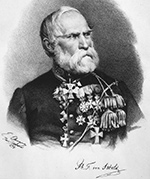-
-full.webp)
Fauna japonica Pl.161 (1833-1850)
Delicate engravings reveal Japan’s wildlife with scientific precision—each feather, scale, and leaf meticulously rendered. A rare glimpse into an ecosystem preserved through ink and paper.
-
-full.webp)
Fauna japonica Pl.057 (1833-1850)
Delicate wings unfold against crisp paper—a Japanese insect preserved in ink, each vein and segment rendered with scientific precision. The creature seems poised to take flight from its page, frozen mid-motion between study and specimen.
-
-full.webp)
Fauna japonica Pl.024 (1833-1850)
Delicate wings spread against crisp paper, a Japanese insect preserved in ink. Every vein, every segment rendered with scientific precision—yet alive with motion, as if about to take flight from the page. Here, nature meets meticulous handwork, frozen in black and white.
-
-full.webp)
Fauna japonica Pl.055 (1833-1850)
Delicate wings spread against rough bark, a Japanese moth rests in precise detail. The engraving balances scientific accuracy with quiet beauty, each line revealing textures of scale and chitin. A moment frozen between specimen study and artistic tribute to nature’s intricate designs.
-
-full.webp)
Fauna japonica Pl.026 (1833-1850)
Delicate engravings reveal Japan’s wildlife with scientific precision—each feather, scale, and leaf meticulously rendered. These plates bridge art and natural history, offering a rare glimpse into 19th-century biodiversity through crisp black lines on paper. The creatures seem poised between documentation and life, frozen yet vibrant.
-
-full.webp)
Fauna japonica Pl.139 (1833-1850)
Delicate wings spread across the page, each vein traced with precision. A Japanese beetle pauses mid-motion, its iridescent shell catching imagined light. Surrounding flora frames the insect like a living specimen pressed between parchment—science and artistry fused in ink.
-
-full.webp)
Fauna japonica Pl.104 (1833-1850)
Delicate wings unfold against crisp paper, a Japanese insect preserved in precise lines. The engraving balances scientific detail with quiet elegance, each vein and segment rendered with care. A glimpse into a world where nature meets meticulous observation.
-
-full.webp)
Fauna japonica Pl.042 (1833-1850)
Delicate wings unfold against precise lines, a Japanese insect preserved in ink. The engraving balances scientific detail with quiet elegance, each vein and segment rendered with care. A glimpse into a world where nature meets meticulous craftsmanship.
-
-full.webp)
Fauna japonica Pl.082 (1833-1850)
Delicate wings spread across the page, veins traced with scientific precision. A Japanese beetle rendered in ink, its carapace gleaming as if still alive beneath the paper. The specimen seems ready to crawl off the page, frozen mid-motion by an unseen hand.
